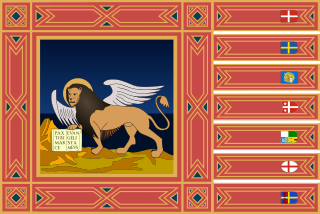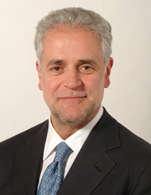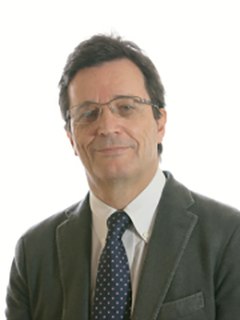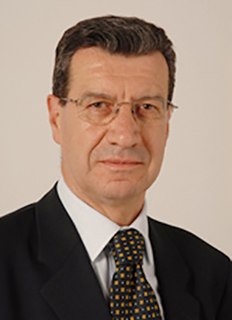 |
|---|
|
The 1990 Lombard regional election took place on 6 and 7 May 1990. The 5th term of the Regional Council was chosen.
Contents

 |
|---|
|
The 1990 Lombard regional election took place on 6 and 7 May 1990. The 5th term of the Regional Council was chosen.

Election was held under proportional representation with provincial constituencies where the largest remainder method with a Droop quota was used. To ensure more proportionality, remained votes and seats were transferred at regional level and calculated at-large.
The Christian Democracy party, which had been the leading political force in the region for twenty years, and the Communist Party lost half million votes each while the Lombard League, a new autonomist party led by Umberto Bossi, obtained a sounding victory, entering the Regional Council with 15 councillors, along with one for the Lombard Alliance, and becoming the second largest party in the region. Since that point the Lombard League became a stable political force in Lombardy.
After the election a cabinet led by the incumbent president Giuseppe Giovenzana was formed but, after the Tangentopoli crisis, it was replaced by a succession of governments which included both Lombard League and the former communist PDS.
 | |||||
| Party | Votes | % | Seats | +/− | |
|---|---|---|---|---|---|
| Christian Democracy | 1,784,634 | 28.56 | 25 | -6 | |
| Lombard League | 1,183,493 | 18.94 | 15 | +15 | |
| Italian Communist Party | 1,172,059 | 18.76 | 15 | -7 | |
| Italian Socialist Party | 892,998 | 14.29 | 12 | ±0 | |
| Green List | 213,529 | 3.42 | 2 | ±0 | |
| Italian Republican Party | 160,985 | 2.58 | 2 | -2 | |
| Italian Social Movement | 158,614 | 2.54 | 2 | -2 | |
| Pensioners' Party | 114,016 | 1.82 | 1 | +1 | |
| Rainbow Greens | 113,824 | 1.82 | 1 | New | |
| Italian Democratic Socialist Party | 103,188 | 1.65 | 1 | -1 | |
| Italian Liberal Party | 88,308 | 1.41 | 1 | ±0 | |
| Lombard Alliance | 76,516 | 1.22 | 1 | New | |
| Proletarian Democracy | 73,451 | 1.18 | 1 | -1 | |
| Antiprohibitionists on Drugs | 62,356 | 1.00 | 1 | New | |
| Hunting Fishing Environment | 18,834 | 0.30 | 0 | New | |
| Ecological List | 14,774 | 0.24 | 0 | New | |
| Italian Southerns' List | 11,199 | 0.18 | 0 | New | |
| Italian National Hunting Movement | 5,200 | 0.08 | 0 | New | |
| Total valid votes | 6,247,978 | 100.00 | 80 | ||
| Blank votes | 188,011 | ||||
| Invalid votes (blank included) | 372,326 | ||||
| Total | 6,620,304 | ||||
| Registered voters & turnout | 7,258,354 | 91.21 | |||
| Source: Ministry of the Interior | |||||
| Province | DC | Lega | PCI | PSI | LV+VA | MSI | PRI | PP | Others | Total |
|---|---|---|---|---|---|---|---|---|---|---|
| Milan | 9 | 5 | 8 | 6 | 3 | 1 | 2 | 1 | 5 | 40 |
| Brescia | 3 | 2 | 1 | 1 | - | 1 | - | - | - | 8 |
| Bergamo | 3 | 2 | 1 | 1 | - | - | - | - | - | 7 |
| Como | 3 | 2 | 1 | 1 | - | - | - | - | - | 7 |
| Varese | 2 | 2 | 1 | 1 | - | - | - | - | - | 6 |
| Pavia | 2 | 1 | 1 | 1 | - | - | - | - | - | 5 |
| Mantua | 1 | - | 1 | 1 | - | - | - | - | - | 3 |
| Cremona | 1 | 1 | 1 | - | - | - | - | - | - | 3 |
| Sondrio | 1 | - | - | - | - | - | - | - | - | 1 |
| Total | 25 | 15 | 15 | 12 | 3 | 2 | 2 | 1 | 5 | 80 |

The 1992 Italian general election was held on 5 and 6 April 1992. They were the first without the traditionally second most important political force in Italian politics, the Italian Communist Party (PCI), which had been disbanded in 1991. Most of its members split between the more democratic-socialist oriented Democratic Party of the Left (PDS), while a minority who did not want to renounce the communist tradition became the Communist Refoundation Party (PRC); however, between them they gained around 4% less than what the already declining PCI had obtained in the 1987 Italian general election, despite PRC absorbing the disbanded Proletarian Democracy (DP).

The Politics of Veneto, a Region of Italy takes place in a framework of a semi-presidential representative democracy, whereby the President is the head of government, and of a pluriform multi-party system. Executive power is exercised by the Regional Government. Legislative power is vested in both the government and the Regional Council.

The Venetian regional election of 1995 took place on 23 April 1995.

The Politics of Lombardy, Italy, takes place in a framework of a semi-presidential representative democracy, whereby the President of the Region is the head of government, and of a pluriform multi-party system. Legislative power is vested in the Regional Council of Lombardy, while executive power is exercised by the Regional Government led by the President, who is directly elected by the people. The current Statute, which regulates the functioning of the regional institutions, has been in force since 2008.

The Politics of Emilia-Romagna, Italy takes place in a framework of a presidential representative democracy, whereby the President of Regional Government is the head of government, and of a pluriform multi-party system. Executive power is exercised by the Regional Government. Legislative power is vested in both the government and the Legislative Assembly.

The Politics of Tuscany, Italy takes place in the framework of a semi-presidential representative democracy, whereby the President of the Region is the head of government, and of a pluriform multi-party system. Legislative power is vested in the Regional Council of Tuscany, while executive power is exercised by the Regional Government led by the President, who is directly elected by the people. The current Statute, which regulates the functioning of the regional institutions, has been in force since 2005.

The Politics of Marche, Italy takes place in a framework of a semi-presidential representative democracy, whereby the President of the Region is the head of government, and of a pluriform multi-party system. Legislative power is vested in the Regional Council, while executive power is exercised by the Regional Government led by the President, who is directly elected by the people. The current Statute, which regulates the functioning of the regional institutions, has been in force since 2004.

The Politics of Umbria, one of the 20 regions of Italy, takes place in a framework of a semi-presidential representative democracy, whereby the president of the region is the head of government, and of a pluriform multi-party system. Legislative power is vested in the Legislative Assembly of Umbria, while executive power is exercised by the Regional Cabinet led by the President, who is directly elected by the people. The current statute, which regulates the functioning of regional institutions, has been in force since 2005.

The 2005 Lombard regional election took place on 3–4 April 2005. The 8th term of the Regional Council was chosen. Roberto Formigoni was re-elected for the third time in a row President, defeating Riccardo Sarfatti.

The 2000 Lombard regional election took place on 16 April 2000. The 7th term of the Regional Council was chosen.

The 1995 Lombard regional election took place on 23 April 1995. The 6th term of the Regional Council was chosen.

The 1975 Lombard regional election took place on 15 June 1975. The 2nd term of the Regional Council was chosen.

The Tuscan regional election of 2005 took place on 3–4 April 2005.

The Tuscan regional election of 2000 took place on 16 April 2000.

The Tuscan regional election of 1995 took place on 23 April 1995.

The 2010 Lombard regional election took place on 28–29 March 2010. The 9th term of the Regional Council was chosen.

The Italian regional elections of 1975 were held on 15 and 16 June. The fifteen ordinary regions, created in 1970, elected their second assemblies. Following the 1971 census, Piedmont, Veneto and Lazio had ten more seats each.

The Italian regional elections of 1980 were held on 8 and 9 June. The fifteen ordinary regions, created in 1970, elected their third assemblies.

The Italian regional elections of 1985 were held on 12 and 13 May. The fifteen ordinary regions, created in 1970, elected their fourth assemblies.

The Italian regional elections of 1990 were held on 6 and 7 May. The fifteen ordinary regions, created in 1970, elected their fifth assemblies.